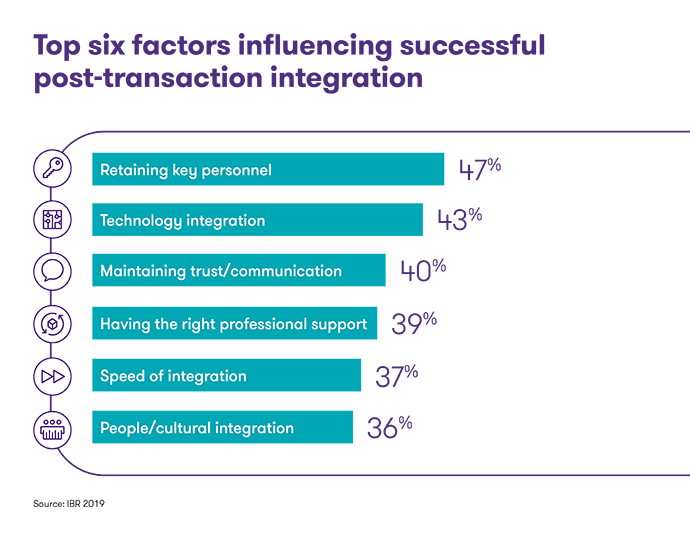-
Why Grant Thornton
Whether you’re growing in one market or many, looking to operate more effectively, managing risk and regulation, or realising stakeholder value, our firms can help.
-
Culture and experience
Grant Thornton’s culture is one of our most valuable assets and has steered us in the right direction for more than 100 years.
-
Global scale and capability
Beyond global scale, we embrace what makes each market unique, local understanding on a global scale.
-
Join our network
In a world that wants more options for high quality services, we differentiate in the market to grow sustainably in today’s rapidly changing environment.
-
Leadership governance and quality
Grant Thornton International Ltd acts as the coordinating entity for member firms in the network with a focus on areas such as strategy, risk, quality monitoring and brand.
-
Africa
24 member firms supporting your business.
-
Americas
31 member firms, covering 44 markets and over 20,000 people.
-
Asia-Pacific
19 member firms with nearly 25,000 people to support you.
-
Europe
53 member firms supporting your business.
-
Middle East
8 member firms supporting your business.
-
Business consulting services
Our business consulting services can help you improve your operational performance and productivity, adding value throughout your growth life cycle.
-
Business process solutions
We can help you identify, understand and manage potential risks to safeguard your business and comply with regulatory requirements.
-
Business risk services
The relationship between a company and its auditor has changed. Organisations must understand and manage risk and seek an appropriate balance between risk and opportunities.
-
Cybersecurity
As organisations become increasingly dependent on digital technology, the opportunities for cyber criminals continue to grow.
-
Forensic and investigation services
At Grant Thornton, we have a wealth of knowledge in forensic services and can support you with issues such as dispute resolution, fraud and insurance claims.
-
Mergers and acquisitions
We work with entrepreneurial businesses in the mid-market to help them assess the true commercial potential of their planned acquisition and understand how the purchase might serve their longer-term strategic goals.
-
Recovery and reorganisation
Workable solutions to maximise your value and deliver sustainable recovery.
-
Transactional advisory services
We can support you throughout the transaction process – helping achieve the best possible outcome at the point of the transaction and in the longer term.
-
Valuations
We provide a wide range of services to recovery and reorganisation professionals, companies and their stakeholders.

-
IFRS
At Grant Thornton, our IFRS advisers can help you navigate the complexity of financial reporting from IFRS 1 to IFRS 17 and IAS 1 to IAS 41.
-
Audit quality monitoring
Having a robust process of quality control is one of the most effective ways to guarantee we deliver high-quality services to our clients.
-
Global audit technology
Our global assurance technology platform provides the ability to conduct client acceptance, consultations and all assurance and other attestation engagements.

-
Corporate and business tax
Our trusted teams can prepare corporate tax files and ruling requests, support you with deferrals, accounting procedures and legitimate tax benefits.
-
Direct international tax
Our teams have in-depth knowledge of the relationship between domestic and international tax laws.
-
Global mobility services
Through our global organisation of member firms, we support both companies and individuals, providing insightful solutions to minimise the tax burden for both parties.
-
Indirect international tax
Using our finely tuned local knowledge, teams from our global organisation of member firms help you understand and comply with often complex and time-consuming regulations.
-
Transfer pricing
The laws surrounding transfer pricing are becoming ever more complex, as tax affairs of multinational companies are facing scrutiny from media, regulators and the public

-
 Banking Holding banking to account: the real diversity and inclusion pictureWe explore how the banking sector can continue to attract, retain and nurture women to build a more diverse and inclusive future.
Banking Holding banking to account: the real diversity and inclusion pictureWe explore how the banking sector can continue to attract, retain and nurture women to build a more diverse and inclusive future. -
 Sustainability From voluntary to mandatory ESG: How banks can future-proof their operationsAs we move from voluntary ESG initiatives to mandatory legislation, we explore what the banking sector needs to prioritise.
Sustainability From voluntary to mandatory ESG: How banks can future-proof their operationsAs we move from voluntary ESG initiatives to mandatory legislation, we explore what the banking sector needs to prioritise. -
 IFRS IFRS 9 - Audit of Expected Credit LossesGPPC releases The Auditor’s response to the risks of material misstatement posed by estimates of expected credit losses under IFRS 9
IFRS IFRS 9 - Audit of Expected Credit LossesGPPC releases The Auditor’s response to the risks of material misstatement posed by estimates of expected credit losses under IFRS 9 -
 growthiQ Steering your company to long-term successHistory has something important to tell us about the difficulties of steering a business to long-term success – through seismic shifts in technology, consumer demands and product development. With that in mind it’s unsurprising that over half the world’s largest companies in the early 1900s had shut their doors by the late 1990s. Some, however, have endured.
growthiQ Steering your company to long-term successHistory has something important to tell us about the difficulties of steering a business to long-term success – through seismic shifts in technology, consumer demands and product development. With that in mind it’s unsurprising that over half the world’s largest companies in the early 1900s had shut their doors by the late 1990s. Some, however, have endured.
-
 International Financial Reporting Standards Implementation of IFRS 17 ‘Insurance Contracts’The auditor’s response to the risks of material misstatement arising from estimates made in applying IFRS 17 ‘Insurance Contracts’
International Financial Reporting Standards Implementation of IFRS 17 ‘Insurance Contracts’The auditor’s response to the risks of material misstatement arising from estimates made in applying IFRS 17 ‘Insurance Contracts’ -
 IFRS Get ready for IFRS 17After twenty years of development the IASB has published IFRS 17 ‘Insurance Contracts’, find out more.
IFRS Get ready for IFRS 17After twenty years of development the IASB has published IFRS 17 ‘Insurance Contracts’, find out more.
-
 Global business pulse - industry analysis Mid-market recovery spreads to more industriesThe index results for 13 key industries of the mid-market reveals a very uneven recovery from COVID-19
Global business pulse - industry analysis Mid-market recovery spreads to more industriesThe index results for 13 key industries of the mid-market reveals a very uneven recovery from COVID-19 -
 Global business pulse - industry analysis A very uneven recovery across industriesThe index results for 13 key industries of the mid-market reveals a very uneven recovery from COVID-19
Global business pulse - industry analysis A very uneven recovery across industriesThe index results for 13 key industries of the mid-market reveals a very uneven recovery from COVID-19 -
 Global business pulse - Sector analysis Clear patterns of damage from COVID-19 across the industriesThe index results for 12 key sectors of the mid-market reveal just how much or little the various parts of the economy were impacted by COVID-19.
Global business pulse - Sector analysis Clear patterns of damage from COVID-19 across the industriesThe index results for 12 key sectors of the mid-market reveal just how much or little the various parts of the economy were impacted by COVID-19. -
 Not for profit Mission: possible – putting impact at the heart of charityGlobal charitable continues to decline and charity leaders are increasingly looking at their own unique impact journey.
Not for profit Mission: possible – putting impact at the heart of charityGlobal charitable continues to decline and charity leaders are increasingly looking at their own unique impact journey.
-
 Private equity ESG for private equityMost US private equity firms are taking steps, prompted by a combination of European examples, imminent regulation, limited partner expectations, and their own sense of what needs to be done.
Private equity ESG for private equityMost US private equity firms are taking steps, prompted by a combination of European examples, imminent regulation, limited partner expectations, and their own sense of what needs to be done. -
 Access to finance Raise finance to invest in changePrepare your business to raise finance to invest in change.
Access to finance Raise finance to invest in changePrepare your business to raise finance to invest in change. -
 Private equity firms Private equity in the mid-market: reshaping strategies for 2021When the global COVID-19 pandemic stormed across the globe in early 2020, the private equity sector was hit hard but deals are coming back to the market.
Private equity firms Private equity in the mid-market: reshaping strategies for 2021When the global COVID-19 pandemic stormed across the globe in early 2020, the private equity sector was hit hard but deals are coming back to the market. -
 Mid-market businesses Getting ready for private equity investmentOur specialists explore how private equity firms are now working with their portfolios and how the mid-market can benefit from investment.
Mid-market businesses Getting ready for private equity investmentOur specialists explore how private equity firms are now working with their portfolios and how the mid-market can benefit from investment.
-
 Public sector Helping build the government of tomorrow, todayLearn about the Grant Thornton US public sector team.
Public sector Helping build the government of tomorrow, todayLearn about the Grant Thornton US public sector team. -
 Global business pulse - industry analysis Mid-market recovery spreads to more industriesThe index results for 13 key industries of the mid-market reveals a very uneven recovery from COVID-19
Global business pulse - industry analysis Mid-market recovery spreads to more industriesThe index results for 13 key industries of the mid-market reveals a very uneven recovery from COVID-19 -
 Global business pulse - industry analysis A very uneven recovery across industriesThe index results for 13 key industries of the mid-market reveals a very uneven recovery from COVID-19
Global business pulse - industry analysis A very uneven recovery across industriesThe index results for 13 key industries of the mid-market reveals a very uneven recovery from COVID-19 -
 Global business pulse - Sector analysis Clear patterns of damage from COVID-19 across the industriesThe index results for 12 key sectors of the mid-market reveal just how much or little the various parts of the economy were impacted by COVID-19.
Global business pulse - Sector analysis Clear patterns of damage from COVID-19 across the industriesThe index results for 12 key sectors of the mid-market reveal just how much or little the various parts of the economy were impacted by COVID-19.
-
 Industries European Real Estate PodcastJessica Patel, Tax Partner at Grant Thornton UK speaks with tax partners and directors across the network to share their insights on the real estate market and some of the challenges.
Industries European Real Estate PodcastJessica Patel, Tax Partner at Grant Thornton UK speaks with tax partners and directors across the network to share their insights on the real estate market and some of the challenges. -
 Industries European Real Estate PodcastJessica Patel, Tax Partner at Grant Thornton UK speaks with tax partners and directors across the network to share their insights on the real estate market and some of the challenges.
Industries European Real Estate PodcastJessica Patel, Tax Partner at Grant Thornton UK speaks with tax partners and directors across the network to share their insights on the real estate market and some of the challenges. -
 Global business pulse - industry analysis Mid-market recovery spreads to more industriesThe index results for 13 key industries of the mid-market reveals a very uneven recovery from COVID-19
Global business pulse - industry analysis Mid-market recovery spreads to more industriesThe index results for 13 key industries of the mid-market reveals a very uneven recovery from COVID-19 -
 Global business pulse - industry analysis A very uneven recovery across industriesThe index results for 13 key industries of the mid-market reveals a very uneven recovery from COVID-19
Global business pulse - industry analysis A very uneven recovery across industriesThe index results for 13 key industries of the mid-market reveals a very uneven recovery from COVID-19
-

-
 Global business pulse - industry analysis Mid-market recovery spreads to more industriesThe index results for 13 key industries of the mid-market reveals a very uneven recovery from COVID-19
Global business pulse - industry analysis Mid-market recovery spreads to more industriesThe index results for 13 key industries of the mid-market reveals a very uneven recovery from COVID-19 -
 Global business pulse - industry analysis A very uneven recovery across industriesThe index results for 13 key industries of the mid-market reveals a very uneven recovery from COVID-19
Global business pulse - industry analysis A very uneven recovery across industriesThe index results for 13 key industries of the mid-market reveals a very uneven recovery from COVID-19 -
 Retail How retail is positioning for successCOVID-19 provided some hard lessons for the retail industry. It is time to turn those into sustainable and well executed growth strategies in 2021.
Retail How retail is positioning for successCOVID-19 provided some hard lessons for the retail industry. It is time to turn those into sustainable and well executed growth strategies in 2021.
-
 Telecoms Can tech and telecom leverage economic headwindsAs most businesses brace for an economic downturn, tech and telecom could see new prospects. But, to turn the headwinds to your advantage, you need to find your unique opportunities and risks.
Telecoms Can tech and telecom leverage economic headwindsAs most businesses brace for an economic downturn, tech and telecom could see new prospects. But, to turn the headwinds to your advantage, you need to find your unique opportunities and risks. -
 Technology Mid-market tech companies lead the way on diversity and inclusionWe explore how the mid-market tech sector can continue to build and nurture a culture that’s increasingly more diverse and inclusive for women.
Technology Mid-market tech companies lead the way on diversity and inclusionWe explore how the mid-market tech sector can continue to build and nurture a culture that’s increasingly more diverse and inclusive for women. -
 Tax Eight tax approaches for global tech employeesCompanies need to understand the tax implications for each unique geography and country there employees reside in.
Tax Eight tax approaches for global tech employeesCompanies need to understand the tax implications for each unique geography and country there employees reside in. -
 Technology Responding to slowing growth: why the tech industry faces a more challenging outlook in 2022We spoke to tech experts about industry trends that could affect companies over the next 12 months and what their short-term strategic priorities should be.
Technology Responding to slowing growth: why the tech industry faces a more challenging outlook in 2022We spoke to tech experts about industry trends that could affect companies over the next 12 months and what their short-term strategic priorities should be.
-
 Telecoms Can tech and telecom leverage economic headwindsAs most businesses brace for an economic downturn, tech and telecom could see new prospects. But, to turn the headwinds to your advantage, you need to find your unique opportunities and risks.
Telecoms Can tech and telecom leverage economic headwindsAs most businesses brace for an economic downturn, tech and telecom could see new prospects. But, to turn the headwinds to your advantage, you need to find your unique opportunities and risks. -
 TMT TMT industry: Fully charged or on standby?Our research revealed five key trends that resonated with Technology, Media and Telecoms (TMT) industry leaders around the world. We asked a panel of our experts from UK, US, India Ireland and Germany, to give us their reaction to the findings.
TMT TMT industry: Fully charged or on standby?Our research revealed five key trends that resonated with Technology, Media and Telecoms (TMT) industry leaders around the world. We asked a panel of our experts from UK, US, India Ireland and Germany, to give us their reaction to the findings. -
 Cybersecurity One size fits nothingTechnology companies must adopt a new approach to digital risk: those that successfully develop a reputation for digital trust by demonstrating an unwavering commitment to cyber security and data privacy will be able to carve out a competitive advantage.
Cybersecurity One size fits nothingTechnology companies must adopt a new approach to digital risk: those that successfully develop a reputation for digital trust by demonstrating an unwavering commitment to cyber security and data privacy will be able to carve out a competitive advantage. -
 Technology, media & telecommunications Why it’s time for a 5G reality checkFigures suggest the mobile sector is maturing. While data usage continues to soar, mobile revenues are expected to flatten out over the next few years.
Technology, media & telecommunications Why it’s time for a 5G reality checkFigures suggest the mobile sector is maturing. While data usage continues to soar, mobile revenues are expected to flatten out over the next few years.
-
 International business Mid-market businesses lifted by rising tide of optimismOptimism among global mid-market business leaders rose to 67% in the first half of this year and they are markedly more optimistic about their prospects with global optimism having increased by 8%.
International business Mid-market businesses lifted by rising tide of optimismOptimism among global mid-market business leaders rose to 67% in the first half of this year and they are markedly more optimistic about their prospects with global optimism having increased by 8%. -
 Global business pulse - industry analysis Mid-market recovery spreads to more industriesThe index results for 13 key industries of the mid-market reveals a very uneven recovery from COVID-19
Global business pulse - industry analysis Mid-market recovery spreads to more industriesThe index results for 13 key industries of the mid-market reveals a very uneven recovery from COVID-19 -
 Hotels COVID-19: Checking in with the hotel industry one year onCOVID-19 provided some hard lessons for the hotel sector. It is time to turn those into sustainable and well executed growth strategies.
Hotels COVID-19: Checking in with the hotel industry one year onCOVID-19 provided some hard lessons for the hotel sector. It is time to turn those into sustainable and well executed growth strategies. -
 Global business pulse - industry analysis A very uneven recovery across industriesThe index results for 13 key industries of the mid-market reveals a very uneven recovery from COVID-19
Global business pulse - industry analysis A very uneven recovery across industriesThe index results for 13 key industries of the mid-market reveals a very uneven recovery from COVID-19
- By topic
-
Women in Business 2024
2024 marks the 20th year of monitoring and measuring the proportion of women occupying senior management roles around the world.
-
COP28: Mid-market firms should seize the opportunity from adaption and innovation
COP28 was the first time there has been a global stocktake on progress against the Paris Agreement.
-
Scanning the horizon: Mid-market sets sights on global trade growth
The latest International Business Report (IBR) data shows that mid-market businesses have high expectations for global trade.
-
Mid-market businesses less optimistic, despite record numbers expecting increased profitability
A closer examination of the data offers some explanation of this apparent contradiction.
-
Women in Business 2024
2024 marks the 20th year of monitoring and measuring the proportion of women occupying senior management roles around the world.
-
Women in business across the globe
Without a greater focus on the issue, women’s parity in senior management won’t be reached until 2053 at the current rate.
-
Women in business: Regional picture
We saw an increase in the percentage of senior management roles held by women, on a global level, but there are some significant regional and country variations.
-
Pathways to Parity: Leading the way
To push towards parity of senior management roles held by women, who leads within an organisation is vital.
-
Generating real change with a long-term focus
The most successful strategy to achieve parity of women in senior management is one which stands alone, independent of an ESG strategy.
-
People at the heart of great business
Businesses have started to put guidelines and incentives in place, focused on driving employees back to the office.
-
Building a culture that champions diversity
Grant Thornton UAE has grown to have a team comprising more than 50 nationalities and this diverse staff has been key in building the inclusive culture of the firm.
-
Focusing and developing a solid strategy around diversity, equity and inclusion
Grant Thornton Greece is pioneering a growing set of diversity, equity and inclusion (DE&I) initiatives that centre around three strategic pillars.
-
Ten considerations for preparing TCFD climate-related financial disclosures
Insights for organisations preparing to implement the International Sustainability Standards Board (ISSB)’s Standards.
-
COP28: Mid-market firms should seize the opportunity from adaption and innovation
COP28 was the first time there has been a global stocktake on progress against the Paris Agreement.
-
Transition Plan Taskforce publishes its final disclosure framework
As organisations in the private sector make commitments and plans to reach net zero, there's a growing need for stakeholders to be able to assess the credibility of their transition plans.
-
Promoting ESG excellence through tax
ESG considerations have never been more important for an organisation’s long-term success, but how can tax be used to add value to an ESG agenda?
-
The US mid-market
As mid-markets concerns about a possible global recession have receded, leaders’ expectations for increases in their profits are at an all-time high.
-
Mid-market businesses lifted by rising tide of optimism
Optimism among global mid-market business leaders rose to 67% in the first half of this year and they are markedly more optimistic about their prospects with global optimism having increased by 8%.
-
Appetite for investment grows among mid-market leaders
Mid-market business leaders plan to increase investment over the next 12 months, specifically in technology, research and development and staff.
-
Scanning the horizon: Mid-market sets sights on global trade growth
The latest International Business Report (IBR) data shows that mid-market businesses have high expectations for global trade.
-
IFRS Alerts
IFRS Alerts covering the latest changes published by the International Accounting Standards Board (IASB).
-
Example Financial Statements
General guidance for preparers of financial statements that supports the commitment to high quality, consistent application of IFRS.
-
Insights into IFRS 2
Insights into IFRS 2 summarises the key areas of the Standard, highlighting aspects that are more difficult to interpret and revisiting the most relevant features that could impact your business.
-
IFRS 3
Mergers and acquisitions are becoming more common as entities aim to achieve their growth objectives. IFRS 3 ‘Business Combinations’ contains the requirements for these transactions.
-
IFRS 8
Our ‘Insights into IFRS 8’ series considers some key implementation issues and includes interpretational guidance in certain problematic areas.
-
IFRS 16
Are you ready for IFRS 16? This series of insights will help you prepare.
-
IAS 36
Insights into IAS 36 provides assistance for preparers of financial statements and help where confusion has been seen in practice.
-
IFRS 17
Explaining the key features of the Standard and providing insights into its application and impact.
-
Pillar 2
Key updates and support for the global implementation of Pillar 2.
-
Global expatriate tax guide
Growing businesses that send their greatest assets – their people – overseas to work can face certain tax burdens, our global guide highlights the common tax rates and issues.
-
International indirect tax guide
Navigating the global VAT, GST and sales tax landscape.
-
Global transfer pricing guide
Helping you easily find everything you need to know about the rules and regulations regarding transfer pricing and Country by Country reporting for every country you do business with.
Merger and acquisition remains a fast but increasingly complex path to growth for many businesses, essential preparation can overcome the challenges.
Despite an ongoing climate of economic uncertainty, global deal activity has held up relatively well, with many businesses maintaining the view that merger and acquisition is an essential element in their growth strategy. However, transactions are taking longer to conclude, which could affect the deal’s overall contribution to growth. Successful leaders are, therefore, spending more attention on preparing their business and anticipating early on all potential obstacles to the negotiation and valuation process, financing the deal and ultimately integrating the two organisations.
According to Grant Thornton’s International Business Report (IBR), 25% of global business leaders conducted domestic deals in the past 12 months, while 17% were involved in international transactions. The global figures also show that 15% of businesses cite merging with another company as part of their strategy for the next two years.
While the appetite for domestic deals is strongest, 18% of emerging Asia-Pacific businesses aim to acquire internationally – a higher proportion than in any other region. Indonesia, Thailand and Vietnam have seen vigorous inbound activity and remain highly attractive to foreign investors. Around 16% of North American businesses are looking for international deals, while in Europe the figure was 12%. Despite Brexit uncertainty, the UK continued to lead on cross-border deals, while elsewhere Europe international deal activity was strong in Germany, the Netherlands and Italy.
This article explores the current M&A landscape, why businesses are choosing M&A as a strategy, and how to best approach such challenges as valuation, selecting acquisition targets, financing deals, and successfully integrating merged businesses.
Organic growth is getting more challenging
 Andy Morgan, global head of M&A and partner at Grant Thornton UK, believes the attractiveness of M&A has not changed. “It is high on boardroom agendas because organic growth is getting more challenging. M&A is still seen as a quick route to building and extending capability, geographic coverage, and achieving greater scale.
Andy Morgan, global head of M&A and partner at Grant Thornton UK, believes the attractiveness of M&A has not changed. “It is high on boardroom agendas because organic growth is getting more challenging. M&A is still seen as a quick route to building and extending capability, geographic coverage, and achieving greater scale.
“M&A is a fundamental point for many businesses now, almost irrespective of size, because their markets are global, and they always need to be looking at how they are responding to the different market challenges in their industry.”
Of the global businesses surveyed, 42% said access to strategic markets was a key factor driving their M&A strategy, while 39% cited a desire to build scale quickly. A similar proportion (38%) said they wanted access to new technology, while in emerging Asia-Pacific this figure was 45%.
 Charles Rousseau, financial advisory partner at Raymond Chabot Grant Thornton in Montreal, Canada, believes that the rush for digital capabilities has contributed significantly to recent transactions. “Demand continues to be extremely high, sales prices are increasing and I would say, at least for North America, buyer confidence is boosting the economy,” he says.
Charles Rousseau, financial advisory partner at Raymond Chabot Grant Thornton in Montreal, Canada, believes that the rush for digital capabilities has contributed significantly to recent transactions. “Demand continues to be extremely high, sales prices are increasing and I would say, at least for North America, buyer confidence is boosting the economy,” he says.
“If you want to gain a foothold or build a distribution network in a particular market or region, that takes time and effort; in making an acquisition, you can accomplish that relatively quickly.”
Increased competition puts pressure on deal-makers
The M&A landscape has become more complex on a global scale for a number of reasons. Deal-making in developed Asia, for example, is currently subdued as a result of current global trade uncertainties. The focus of outbound M&A from China has shifted, with activity in 2019 at its weakest in a decade, as regulatory scrutiny of Chinese companies tightened.
Morgan says: “The M&A landscape is impacted to a degree by the challenges around the uncertainty that everybody faces currently, whether that’s political or economic, in a global, local market or industry context.”
The deals themselves are getting more complicated too, with the parties involved becoming more sophisticated as they try to acquire new capabilities – such as data and digital technology – that are often far removed from their traditional core business.
There’s also a shrinking pool of targets and more private equity involved, increasing competition and putting pressure on deal teams and timelines.
Rousseau points to increased diligence. “We’re seeing more transactions take longer because either strategic or financial players are taking time to ask more questions before doing a transaction,” he says.
Valuations, meanwhile, are challenging. Businesses have to feel confident that they can achieve what they want with the assets they are purchasing. Morgan believes the focus should not just be on what businesses have done historically but on how the acquiring and target businesses will perform together in the future.
“You very rarely get to acquire good quality businesses on the cheap these days, so you’re probably going to pay full value for the acquisition,” he says. “Therefore, success is all about execution."
“In a world where visibility matters, the more uncertainty there is, the more challenging it becomes to build your valuation models. If you’re taking a longer-term view, then you must have a clear picture about where and why you’re taking that M&A strategy, and what’s going to drive value for you.”
Tackling pre-deal challenges upfront
Successful buyers think carefully about why they are taking the M&A route, and how to source the right targets in the first place. IBR data shows that identifying the right opportunities was a barrier for 17% of businesses not considering M&A activity.
If you are only reacting to inbound opportunities, by their nature they will probably be highly competitive, says Morgan. Proactively building a strategic pipeline of potential acquisitions, and really working to unlock these, has benefits. “You start with a better understanding of the business and its trajectory, and you have probably built some relationships with key stakeholders, which gives you more comfort over what you are bidding on.”
Meanwhile, 30% of leaders saw quantifying synergies as a challenge to concluding future deals. Rousseau says: “What you’re purchasing must align with your manufacturing or operating capabilities. Are you going to generate the synergies that you think you will? That’s part of the assessment upfront.”
When it came to international deals, leaders were more anxious about lacking the right professional support, with 27% citing this as a critical challenge compared with 21% for domestic M&A.
“You have to look at regulatory differences in different countries, so that’s another complexity,” says Rousseau. “Beyond the legal due diligence, financial due diligence is more complicated because of the focus on earnings and, for example, tax optimisation, which is complicated by a cross-border transaction.
“The operational side has also become more challenging. You need to review management and teams, check the shape of any plant or machinery, that capabilities and processes are working. All of that is crucial in assessing the scope and the quality of the asset.”
A compelling investment thesis helps to secure finance
While many businesses may perceive a shortage of finance as a significant constraint on organic growth, several markets have a healthy supply of capital for buyers.
“There is significant liquidity out there,” says Morgan. “And one of the interesting things for people contemplating M&A is that they have likely got a lot more diversity and variety in those funding solutions than they had five years ago.”
Leaders need to think carefully about what source of finance will best enable them to achieve their strategic goals. IBR data shows that 58% of businesses use existing funds to finance M&A, 43% use debt finance and 36% seek private equity investment. With the rise of debt funds, sources of debt finance are more varied than the traditional clearing bank leveraged finance operations.
“The rise of the debt funds has been truly disruptive to the funding landscape. They are bringing significant flexibility in terms of how they are lending, and where they sit in the capital structure,” says Morgan. “That creates plenty of opportunities, including blended debt and equity solutions, for corporates that are acquiring.”
Leaders should not forget the public market either, he says. Despite weaker capital flows, there’s still institutional appetite for the right propositions.
Private equity houses are looking for longer-term investments
 Private equity has become a significant driver of the M&A market, whether in financing the deal or selling a business in a portfolio. Dinesh Anand, global head of private equity and partner at Grant Thornton India, says: “Private equity funds are sitting on huge amounts of dry powder – they have the money to invest. Meanwhile, in many markets today, the cost of financing through debt is becoming very expensive.
Private equity has become a significant driver of the M&A market, whether in financing the deal or selling a business in a portfolio. Dinesh Anand, global head of private equity and partner at Grant Thornton India, says: “Private equity funds are sitting on huge amounts of dry powder – they have the money to invest. Meanwhile, in many markets today, the cost of financing through debt is becoming very expensive.
“Private equity businesses also want to do more value-driven business transformation. Everybody’s looking at a five- to five-and-a-half-year average investment period, and they’re looking at transformations to enable long-term growth and a better return rather than just doing a cost stake-out and quick exit.”
While there’s plenty of funding available, Rousseau says businesses should nonetheless be prepared for a more thorough due diligence process. “You need to build an investment thesis and a solid business plan. You also need a strong deal team and the right support.”
“You must make sure your house is in order. You need to demonstrate your internal operations, and sound corporate governance. Resolutions should be updated, major corporate actions should be rectified, intellectual property well protected, you should have efficient tax and legal structures, and everything must be available in documents. Doing a vendor due diligence and your own internal review is often key to securing capital or selling your business.”
Planning for post-deal integration is crucial
 According to IBR global data, two thirds (66%) of leaders consider post-merger integration to be as vital to the financial success of the acquisition as pre-deal negotiations. In leaders’ experience, critical factors in successful outcomes include retaining key personnel (47%), technology integration (43%) and maintaining trust and communication (40%). While the pre-deal process can demand intense focus, the integration phase also requires attention early on in the process.
According to IBR global data, two thirds (66%) of leaders consider post-merger integration to be as vital to the financial success of the acquisition as pre-deal negotiations. In leaders’ experience, critical factors in successful outcomes include retaining key personnel (47%), technology integration (43%) and maintaining trust and communication (40%). While the pre-deal process can demand intense focus, the integration phase also requires attention early on in the process.
Rousseau says: “There are many reasons upfront that can have an impact as you try to integrate the business. Planning, structuring and prioritising is how you create value in a transaction, and keeping momentum post-deal is critical.”
Divergent cultures in the companies involved can also present challenges, he adds. “It’s surprising how two different businesses will operate based just on the culture, the way they work, the methodology, the communication… and then sometimes the infrastructure of both businesses won’t fit.”
Morgan says: “You need to be very clear in any acquisition where the value that is going to accrue to your organisation is going to come from. You also need to be clear on the metrics to be applied to measure the delivery of that value post-deal. The more clarity you have got on that before the transaction, the better your prospects of delivering well against it.
“Think about where the critical talent is in the organisation you're acquiring, and how you’re going to lock that in, and align it with your own business and culture.” Identifying key staff and incentivising them early on is essential, while communication to all personnel is vital to creating momentum.
Of equal importance is communication with customers. A clear communications strategy, before and after the deal, can answer any questions about why the deal is happening and what customers can expect to see from it.
Amid the complexity, don’t lose sight of the purpose
Successful acquisitions come down to capturing the value of the asset and realising the synergy goal as soon as possible, but in the current environment, where complexity can protract the process, that requires a lot of work and clear thinking upfront.
“The risks around M&A come down to the implementation,” says Morgan. “It is fundamentally about whether you have a clear and well-mapped rationale for why you are buying that business in the first place. And then, what’s your strategy for the implementation and integration of that acquisition into the broader business once you have it?”
Keeping focused on the initial goals for growth and anticipating the friction points at every step of the deal and post-deal process will greatly enhance your opportunity for locking in gains and achieving transformative growth.
Top tips for achieving a deal that delivers growth
- Have a clear goal for why you are seeking M&A as a growth strategy and assess your acquisition target on its ability to deliver on that.
- Valuations are important, but a focus on successful execution is fundamental.
- Proactively manage and develop relationships with a pipeline of potential acquisition targets.
- Be sure that what you purchase will fit with your operations and that desired synergies will be achieved.
- Examine the diversity of finance options available, and consider how those types of finance may support your growth plan.
- Develop a compelling investment thesis and a healthy business plan to attract finance.
- Think about the potential post-deal challenges upfront and prepare to tackle them throughout the deal process.
- Identify key personnel to retain and incentivize them early on.
- Develop a communication strategy for employees and customers.
Speak to your local Grant Thornton adviser or the experts below to discuss your M&A growth strategy or the stages of the deal process.
|
Andy Morgan |
Charles Rousseau |
Dinesh Anand |
Related content
